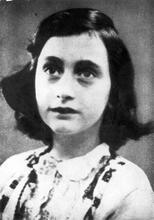Adolphine Schwimmer-Vigeveno
Adolphine Schwimmer-Vigeveno was an active member of the Jewish Women’s Council in the Netherlands in the decades before the outbreak of World War II. She served as the general editor of its periodical and later as its president, stimulating solidarity among Jewish women, organizing Jewish social work, and exploring contemporary Jewish issues. From 1933 she led the council in assisting Jewish refugees from Germany, especially children. She escaped from the Netherlands in 1940 and lived in New Zealand before returning to the Netherlands after the war, where she dedicated herself to a Zionist organization. In 1949 she moved to Jerusalem, returning frequently to the Netherlands to campaign for Israel.
In 1935, a bill prohibiting the employment of married women introduced in the Dutch parliament caused a dispute in the Joodsche Vrouwenraad, the Jewish Women’s Council in the Netherlands. Some of the members wanted their council to join the Committee for the Defense of the Freedom of Labor for Women that had just been founded in response to the bill. However, Orthodox members of the Council did not wish to protest against the bill because they considered it consistent with Jewish law. After closely considering the issue, the president of the Jewish Women’s Council, Adolphine Schwimmer-Vigeveno deduced that, since care for the family was not a woman’s sole responsibility, the council could not subscribe to the bill. The right to work was common to all, and women had to be allowed to determine their own fate and that of their families. The president was thus of the opinion that “this law could not be in the spirit of Judaism.”
Early Life
Adolphine Vigeveno was born in Amsterdam on February 23, 1899, into a highly assimilated Jewish family. She was the only daughter of Gabriël Vigeveno, a businessman of Italian descent, and Henriëtte Goudstikker, a sister of the famous antique collector Jacques Goudstikker, who was of Dutch-Jewish descent. Adolphine, or Phine as she was called, had two brothers, José and James. After attending the elitist gymnasium [high school], Adolphine began to study Dutch language at the University of Amsterdam, but soon switched to law. Adolphine, however, spent most of her time in college at the union for women students and at the Nederlandse Zionistische Studenten Organisatie, the student branch of the Dutch Zionist organization. She became engaged before graduating, left the university, and in 1922 she married Felix Schwimmer, a businessman of Austrian-Hungarian descent who was ten years her senior. They had three children, two boys and a girl.
Leadership Positions
In 1929, Adolphine became the general editor of Ha’Ischa, a new periodical of the Jewish Women’s Council. Despite the aims of the council to stimulate solidarity among Jewish women and to organize Jewish social work, Ha’Ischa dealt neither with social work and charity nor with feminist issues. The articles it published dealt mostly with Judaism: Jewish religion, the development of Palestine and the political situation abroad. Among the articles Adolphine contributed was an account of the world conference of Jewish women held in Hamburg in June 1929 which she herself attended. Her skill lay in recruiting valuable members to the editorial staff, such as the Dutch writer Siegfried van Praag and the chairman of the Nederlandse Zionisten Bond, the Dutch Zionist Organization, Fritz (Peretz) Bernstein (1890–1971), whom she later married.
In 1932 Adolphine left the editorial staff of Ha’Ischa to become the president of the Jewish Women’s Council, a post she held until the abolition of the council by the German occupiers in 1940. The Jewish Women’s Council originated in 1929 from the merger of local councils that had been founded in 1921 by a delegation of the American National Council of Jewish Women. During the 1930s the council had approximately two thousand members. These were Jewishly conscious women and included both Orthodox and Zionist women. Throughout the 1930s the Council’s usual activities, such as courses and lectures to enhance the knowledge of Judaism, were overshadowed by the severe consequences of the political situation abroad. From 1933 onwards the council, led by Adolphine, engaged in relief work with Jewish refugees from Germany, taking a special interest in the children among them.
Upheaval & Personal Life
Her efforts on behalf of young refugees helped Adolphine Schwimmer-Vigeveno, her husband, and her children to escape from the Netherlands on May 14, 1940, the day of the Dutch capitulation. Adolphine was among those who had provided for a boat that left the port of Ijmuiden for England on that day, carrying eighty Jewish children to safety. From England, Adolphine and her family left for New Zealand, where her marriage broke down. After the war she returned to the Netherlands, bringing only her youngest son with her. She remained in Amsterdam for some years, dedicating herself to Keren ha-Yesod or the Palestina Opbouwfonds, an organization that worked for the advancement of Palestine. After her mother’s death in 1949, Adolphine left for Jerusalem.
During the 1950s, Adolphine returned to the Netherlands regularly to campaign for Israel and in particular to raise support for the Israel Museum. After a brief and unsuccessful second marriage, to Jacob Coltof in 1950, Adolphine married Fritz (Peretz) Bernstein, who had in 1936 moved to Palestine, where he became the editor of the General Zionist Ha-Boker newspaper, a member of Knesset from its inception in 1949 until 1965 and the Minister of Trade and Industry in 1948–1949 and from 1952 to 1955. After Bernstein’s death in 1971 as well as the deaths of many of her Dutch friends in Israel, Adolphine Schwimmer moved to Bedford, England, to be near her younger son. She died there on her eighty-fifth birthday but was buried in Jerusalem.
Boas, H. Bewust-joodse Nederlandse vrouwen: veertien portretten. Kampen: 1992.
Schwimmer-Vigeveno, A. Joodse Vrouwenraad in Nederland: bij het tienjarig bestaan. Amsterdam: 1939.
Tijenk, C. “Joodse vrouwen in de Nederlandse vrouwenbeweging (1898–1948).” Unpublished master’s degree thesis. Nijmegen: 1997.



